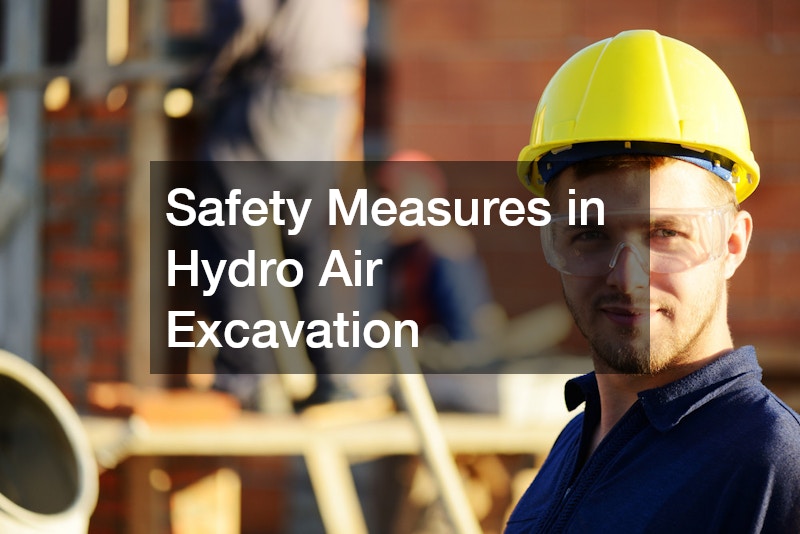Hydro air excavation is a modern and non-destructive method used in various industries to safely and efficiently remove soil and debris. This technology employs high-pressure water and a powerful vacuum system to break up soil, which is then removed entirely by air conveyance. Workers prefer this method over traditional excavation techniques as it offers a reduced risk of damaging underground utilities, which can be a common issue with mechanical excavation tools.
This technique is essential, especially in urban settings where the underground landscape is densely packed with pipes and cables. The accuracy and precision of hydro air excavation make it an invaluable tool for engineers and construction professionals alike.
The process of hydro air excavation is inherently safer for workers, but it still requires keen attention to safety protocols. Personal protective equipment (PPE) such as gloves, eye protection, and hard hats are just a few essentials that workers need to use during operations. Training on equipment handling and hazard recognition is vital to minimize the risk of injury. Furthermore, continuous monitoring of the excavation site ensures that the process runs smoothly without putting workers at unexpected risk. Implementing a comprehensive safety plan is key to managing the challenges and ensuring worker safety during hydro air excavation projects.
Techniques vary depending on the project’s specifications, but generally follow a cautious and methodical approach. Prior to operation, workers must receive detailed site maps and utility location charts to have a comprehensive understanding of the terrain they will be working on. Communication is crucial during hydro air excavation operations, ensuring that team members coordinate efficiently and respond promptly to any arising concerns. To further mitigate risks, operators should routinely inspect equipment to confirm that all components are functioning correctly. This attention to detail plays a crucial role in maintaining a safety-first culture at excavation sites.
Safety Measures in Hydro Air Excavation

Safety is a paramount concern in hydro air excavation, and setting up effective safety measures can make a significant difference in operations. The first line of defense is the heavy reliance on modern equipment designed with safety features that reduce hazards. Regular maintenance checks and calibrations of these machines ensure consistent performance and the protection of site workers. Another critical safety measure involves establishing clearly defined work zones with barriers and signs to warn off unauthorized personnel. These practices help prevent unauthorized access to excavation sites, effectively reducing the likelihood of accidents occurring.
Beyond the technical and mechanical aspects, workers are trained to recognize and respond to hazards that may present themselves during excavation. This training is comprehensive, combining theoretical knowledge with practical simulations that prepare workers for real-world scenarios. Regular safety drills and workshops encourage workers to remain vigilant and refresh their skills continually. A safety-conscious work culture is crucial, with site managers and team leaders playing an active role in reinforcing safety protocols and actively managing risks. Such an environment not only prioritizes safety but also promotes productivity, knowing that well-protected workers perform better.
It is also essential to consider the environmental safety factors associated with hydro air excavation. The use of water as a medium for excavation poses challenges related to water management and contamination prevention. Workers are trained to manage water runoff appropriately, implementing measures such as sediment control that prevent the contamination of nearby water bodies. Additionally, adhering to environmental regulations and site-specific protocols ensures that operations are not only safe for workers but also sustainable in the long term. By addressing these environmental considerations, firms can secure their reputation as responsible and forward-thinking operators in the field of hydro air excavation.
Enhancing Worker Safety Beyond the Basics
Advancements in technology provide additional layers of safety for workers engaged in hydro air excavation. Implementing technologies such as ground-penetrating radar allows for the identification of potential underground obstacles before excavation begins. These tools provide valuable insights that help refine processes and strategies, making it easier to avoid hazards. Innovations in real-time monitoring systems also contribute to worker safety by allowing supervisors to track excavation activities instantaneously. Any deviation from the norm can be detected promptly, allowing for quick interventions and adjustments to strategies to maintain safety.
Effective communication, powered by technology, is another critical component that enhances worker safety. Providing workers with communication devices ensures that they can maintain contact with their teams regardless of their physical location at the site. This connectivity allows for timely notifications in case of emerging issues or necessary procedural changes, thereby reducing the time needed to implement safety measures. Also, formal channels of communication enable teams to coordinate and execute tasks in a more synchronized manner. A well-connected team is more likely to work cohesively, reducing the chances of mishaps occurring due to miscommunication or delayed responses.
Hydro air excavation offers a safer and more efficient alternative to traditional excavation methods. By leveraging advanced technology, comprehensive training, and effective communication, workers can maintain safety under challenging conditions. Protecting workers is not only a legal and ethical obligation but also a cornerstone of achieving operational excellence in hydro air excavation projects. By continuously advancing safety protocols and fostering a culture of risk-awareness, the industry can ensure both the well-being of its workers and the successful completion of its projects.



